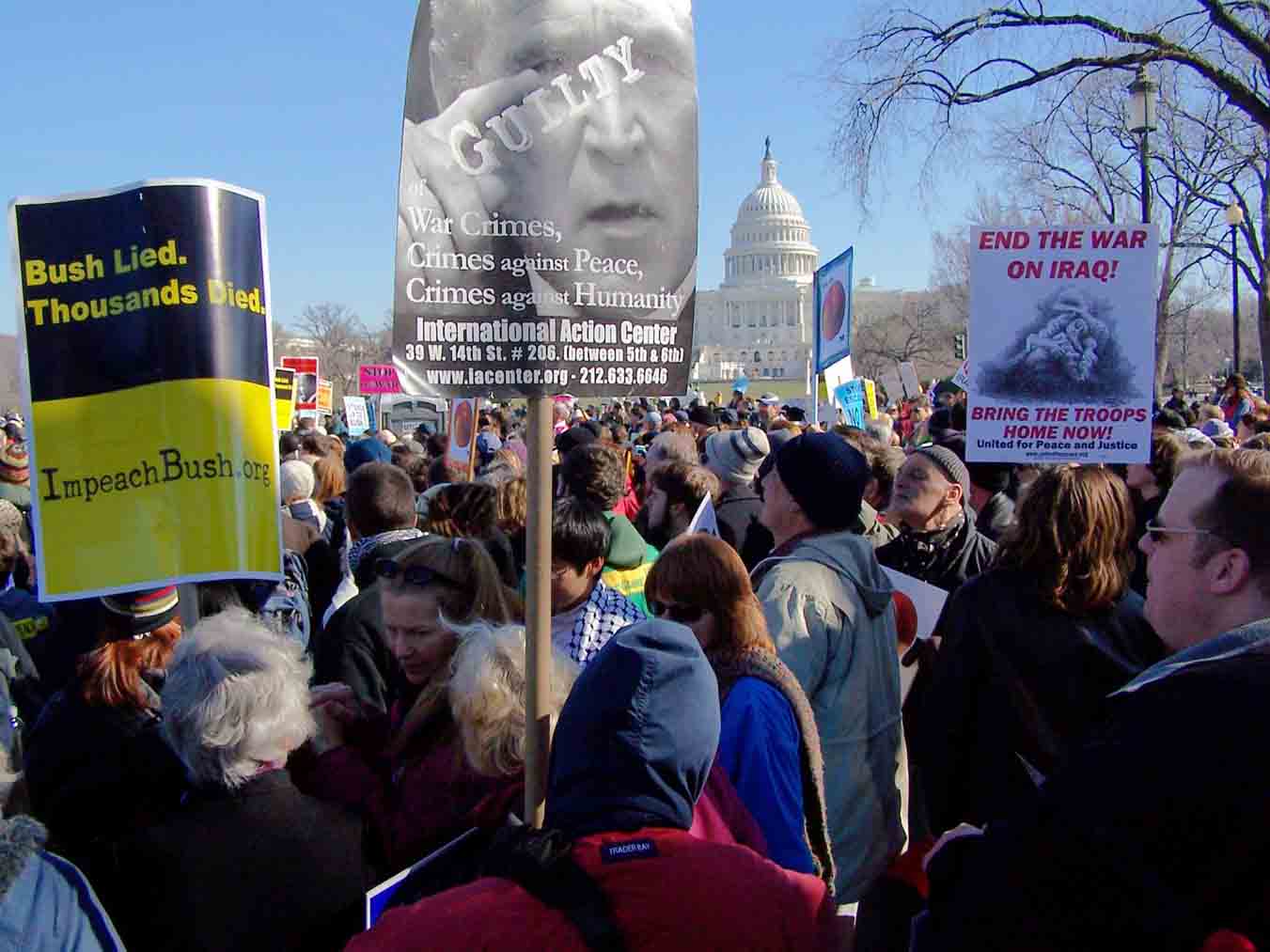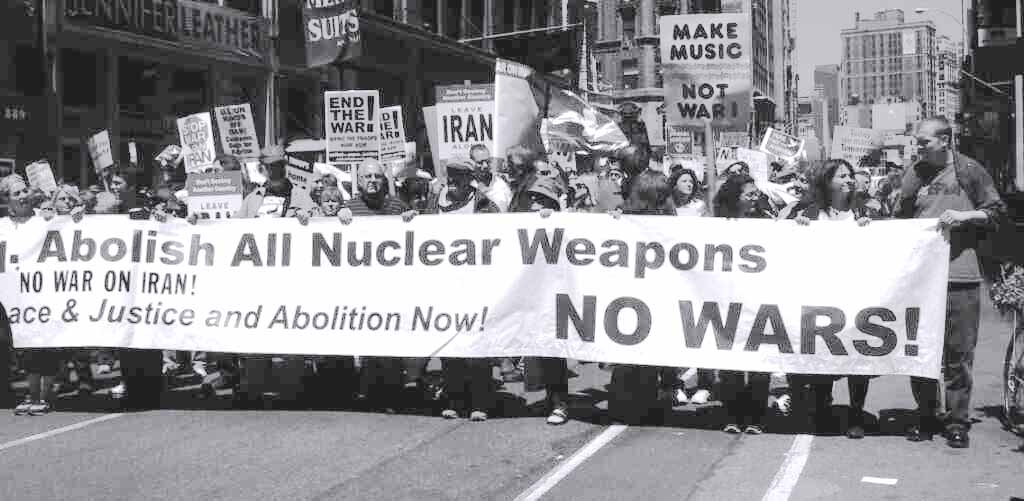Countdown to Zero: whose nukes matter?
Andrew Lichterman
The recently released film Countdown to Zero has sparked controversy amongst disarmament advocates. Local disarmament groups were encouraged by national arms control groups and funders to turn people out for the film, but some who have seen it believe that at best it is unhelpful, and at worst that it might do more to build support for the next round of U.S. armed counterproliferation abroad than to advance disarmament. (see Darwin BondGraham, “Co-opting the Anti-Nuclear Movement,” MRZine.org). United for Peace and Justice has made available a leaflet, Countdown to Zero? Or fight for a nuclear free future! designed to fill in some of the key information about nuclear weapons and disarmament that the film leaves out.
Countdown to Zero is intended to be part of a broader campaign, with its main foundation funder, the Ploughshares Fund, encouraging its grantees to turn people out for the film and offering further grants “for activities that will take advantage of Countdown to Zero and help catalyze public support for a world without nuclear weapons.” I haven’t seen the film yet, but some things I have seen so far of the surrounding campaign raise troubling questions about its intentions and its likely effect.
On July 29, ex-CIA officer Valerie Plame, one of the experts featured in the film, appeared on MSNBC’s Hardball with Chris Matthews. The segment promoted the film, consisting of excerpts interspersed with back and forth from Plame and Matthews with a Countdown to Zero logo running in the corner of the screen throughout. The segment began by focusing on the alleged danger that Osama Bin-Laden and Al-Qaeda might get nuclear weapons, with another expert featured in the film, Graham Allison, stating several times that Bin-Laden had expressed the desire to kill four million Americans. The accompanying images were of Bin Laden and AK47-wielding Al-Qaeda members. Most of the rest of the segment was devoted to Plame and other experts, both in film excerpts and in her back and forth with Matthews, hammering on the threat posed by Iran’s nuclear program. Plame asserted in an excerpt from the film that that Iran “without question” is seeking nuclear weapons, and went on at length about how good Iran is at concealing and protecting its nuclear efforts.
In the four minute and forty second clip, only about twenty seconds can be characterized as even mentioning disarmament–and then only as a far distant goal, albeit ultimately the only definitive solution to the much-emphasized ‘nuclear terrorist’ and ‘rogue state’ threats of today. The rest of the segment was devoted to the dangers posed by the possibility that bad people who are Muslims of one kind or another might get or use The Bomb.
In fact, if this segment was the first thing you had ever seen about nuclear weapons, you would have no idea that anyone on earth already has a nuclear arsenal aside from Russia and Pakistan. Russia comes into the picture only as somewhere that terrorists might buy or steal nuclear weapons or materials to make them. And in the closing seconds of the segment, when asked by Matthews what posed the greatest nuclear threat–Pakistan, Iran, or terrorists (apparently the only nuclear dangers on the mainstream media menu) Plame didn’t take issue with the framing of the question. She chose Pakistan, because it is in “such a volatile region” and “we cannot have a lot of confidence in their command and control.” Pakistan lies in close proximity to unmentioned nuclear powers China and India, shares a contiguous land mass with unmentioned nuclear powers Israel and France and barely-mentioned nuclear former superpower Russia, and is fighting a covert and overt war as client (and perhaps partial adversary) of the unmentioned nuclear-armed sole superpower, the United States, and unmentioned nuclear power and former regional colonial overlord England. A “volatile region” indeed. (more…)


